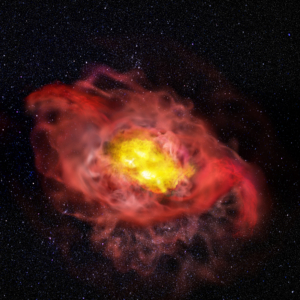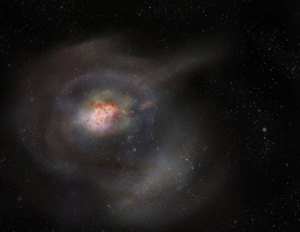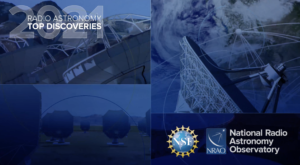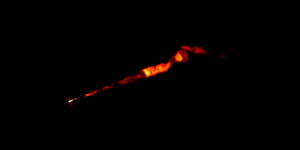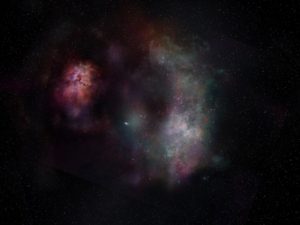Scientists using the Atacama Large Millimeter/submillimeter Array (ALMA)— an international observatory co-operated by the US National Science Foundation’s National Radio Astronomy Observatory (NRAO)—have observed a significant amount of cold, neutral gas in the outer regions of the young galaxy A1689-zD1, as well as outflows of hot gas coming from the galaxy’s center. These results may shed light on a critical stage of galactic evolution for early galaxies, where young galaxies begin the transformation to be increasingly like their later, more structured cousins.
Scientists Find Elusive Gas From Post-starburst Galaxies Hiding in Plain Sight
Post-starburst galaxies were previously thought to scatter all of their gas and dust—the fuel required for creating new stars—in violent bursts of energy, and with extraordinary speed. Now, new data from the Atacama Large Millimeter/submillimeter Array (ALMA) reveals that these galaxies don’t scatter all of their star-forming fuel after all. Instead, after their supposed end, these dormant galaxies hold onto and compress large amounts of highly-concentrated, turbulent gas. But contrary to expectation, they’re not using it to form stars.
2021 Science Highlights: Looking Back on a Turbulent Year in Radio Astronomy
The formation of massive stars and planets. The deaths of stars and galaxies. The extreme and violent behaviors of black hole jets and quasars. An up-close and personal radar view of the Moon. These mysteries and more were unraveled in 2021 by radio astronomers leveraging the scientific and technological power of National Radio Astronomy Observatory (NRAO) facilities.
The Baseline #10 – How To Kick A Pulsar Out Of The Galaxy
Pulsars are neutron stars. They are formed when an old star explodes as a supernova, so you would expect to find them in the center of its supernova remnant. But not always. Astronomers have learned that some pulsars are ejected from its remnant. The Very Large Array has discovered one pulsar that is quite a kick.
Join our host Summer Ash of the National Radio Astronomy Observatory as she talks about how you can get a kick out of pulsars.
VLA Reveals Double-Helix Structure in Massive Galaxy’s Jet
Astronomers used the VLA to trace a corkscrew-shaped magnetic field in a powerful jet of material ejected from the core of a massive galaxy farther away from the central galaxy’s central black hole than ever seen before. The new images provide clues that will help understand the mechanics of such jets, which are seen throughout the Universe.
ALMA Scientists Detect Signs of Water in a Galaxy Far, Far Away
Water has been detected in the most massive galaxy in the early Universe, according to new observations from the Atacama Large Millimeter/submillimeter Array (ALMA). Scientists studying SPT0311-58 found H20, along with carbon monoxide in the galaxy, which is located nearly 12.88 billion light years from Earth. Detection of these two molecules in abundance suggests that the molecular Universe was going strong shortly after the elements were forged in early stars. The new research comprises the most detailed study of molecular gas content of a galaxy in the early Universe to date and the most distant detection of H20 in a regular star-forming galaxy.






